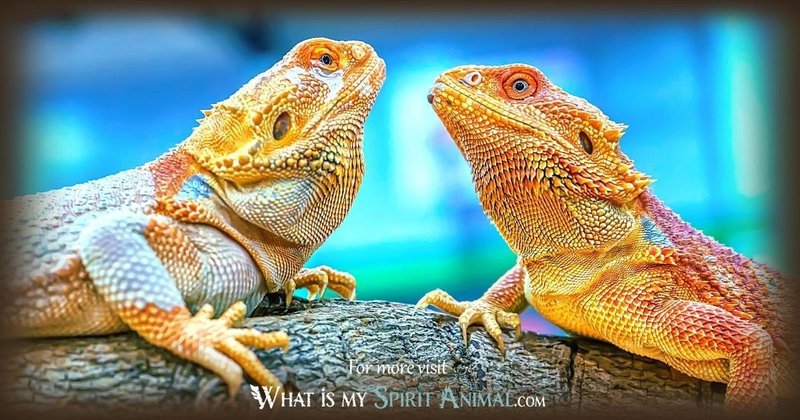
The bearded dragon isn’t just another pet; it’s a creature steeped in symbolism and cultural significance. Imagine sitting by a cozy fire, talking about how this little reptile has found its way into our lives and our stories, teaching us lessons along the way. In this article, we’ll journey through the importance of the bearded dragon in culture and symbolism, unraveling its role in myths, arts, and even modern-day perceptions.
The Bearded Dragon’s Origins and Natural Habitat
To understand the bearded dragon’s importance, we first need to know where it comes from. Native to Australia, these reptiles thrive in arid regions, basking in the sun on rocky outcrops and digging into the earth for shelter. Their natural habitat has shaped their behavior and lifestyle, making them resilient and adaptable creatures.
In the wild, bearded dragons can exhibit fascinating behaviors that reflect their environment. For instance, when threatened, they puff up their “beard” (a flap of skin around their neck) to appear larger and more intimidating. This natural defense mechanism is a powerful statement about their desire to survive against the odds—a theme that resonates across many cultures, where overcoming adversity is a common motif.
In many Aboriginal cultures, animals are viewed as spiritual guides, representing specific values and teachings. The bearded dragon is no exception. It embodies endurance and adaptability, qualities that many societies celebrate. It’s not just about surviving; it’s about thriving in challenging situations—something we can all relate to, right?
Symbolism of the Bearded Dragon in Various Cultures
Bearded dragons symbolize different things in various cultures, often linked to resilience, wisdom, and strength. For instance, in some Indigenous Australian cultures, these lizards are thought to represent the connection between earth and sky. Their ability to thrive in harsh environments has led them to be seen as symbols of adaptability and survival.
In Western societies, the bearded dragon has become a popular pet. This shift in perception highlights a growing appreciation for exotic animals. Interestingly, these lizards often symbolize companionship and loyalty. Owners frequently describe their bond with their bearded dragons as deep and meaningful—a relationship that teaches mutual respect and understanding.
Moreover, the bearded dragon has made its way into modern art and literature. You might find them featured in children’s books, where they serve as characters that teach important life lessons. By embodying themes of adventure and discovery, these lizards encourage readers to explore their own fears and curiosity.
The Bearded Dragon in Folklore and Mythology
The world of folklore and mythology is rich with tales of various creatures, and the bearded dragon is no stranger to this realm. While you won’t find them in ancient legends as prominently as majestic dragons or wise owls, they do appear in modern myths created by enthusiasts. They often represent the balance between strength and gentleness.
In many stories, bearded dragons are depicted as wise mentors, guiding young adventurers on their journeys. These tales remind us that wisdom often comes in unexpected forms. By looking to these lizards, storytellers highlight the importance of embracing all kinds of creatures, regardless of how ordinary they might seem.
One popular modern folktale tells of a bearded dragon that travels across the land, bestowing wisdom to those willing to listen. The moral often centers around understanding and appreciation for the world’s diversity. Each interaction teaches a valuable lesson about life, resilience, and the importance of companionship.
Bearded Dragons in Modern Popular Culture
Fast forward to today, and bearded dragons have captured the attention of many in popular culture. Ever seen a cute Instagram account dedicated to a bearded dragon? You’re not alone. These reptiles have gone viral, showcasing their quirky personalities and charm. Whether it’s a bearded dragon dressed in a tiny wizard hat or hanging out with their human while binge-watching TV, they add a fun, quirky element to modern life.
In television and film, these lizards sometimes make cameos, often symbolizing calmness and wisdom. For example, they might be depicted as the pet of a quirky scientist or a lovable sidekick in a family-friendly movie. This portrayal reinforces their image as gentle creatures, bridging the gap between humans and reptiles.
The growing popularity of bearded dragons also means they’re influencing trends in pet ownership. As more people adopt them, they’re becoming symbols of responsible pet ownership and the joys of caring for exotic animals. It’s a movement that encourages compassion toward all living beings.
The Educational Role of Bearded Dragons
Bearded dragons play an important role in education, especially in classrooms and educational programs. Many schools use these lizards as teaching tools to help kids learn about biology, ecosystems, and responsibilities of pet ownership. By nurturing a bearded dragon, students gain hands-on experience in caring for living creatures, which can foster empathy and a sense of responsibility.
In educational settings, these reptiles can serve as icebreakers, helping children learn not just about science but communication and teamwork as well. It’s fascinating to see how a small lizard can inspire curiosity and ignite a passion for learning.
Additionally, wildlife organizations often use bearded dragons in outreach programs. By showcasing these animals, they aim to teach kids and adults about conservation and the importance of protecting our natural world. This educational angle highlights how bearded dragons are not just pets but also ambassadors for their species.
In many ways, the bearded dragon is a symbol of resilience and companionship. Its importance in culture and symbolism goes far beyond being just a pet; it’s a reminder of our connection to the natural world. Whether they inspire stories, educate future generations, or simply bring joy to our lives, these lizards hold a special place in our hearts.
As you think about the significance of the bearded dragon, remember its role in bridging cultures and fostering understanding across different lifestyles. These gentle reptiles encourage us to see the beauty in diversity and the importance of empathy. So the next time you see a bearded dragon, whether in real life or online, take a moment to appreciate its rich history and what it symbolizes for us in the modern world.

